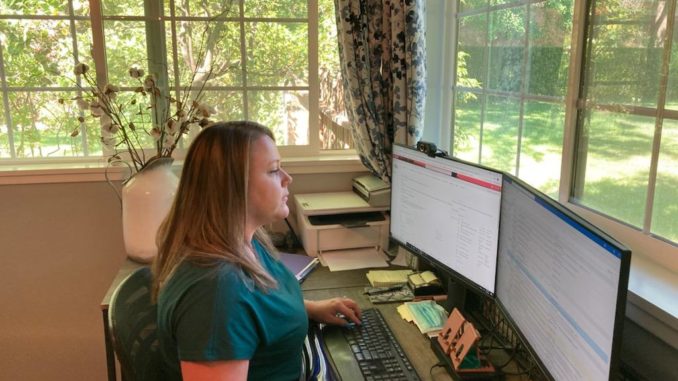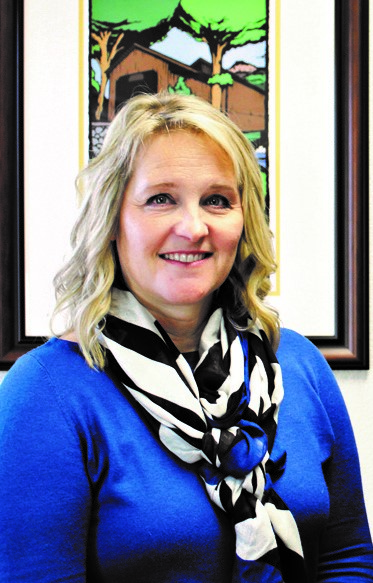
This feature is part of the CN&R’s June 2021 Business Issue.
When the COVID-19 pandemic began, Build with Ferguson (build.com) transitioned all of its employees to a work-from-home model. It was an intensive process, General Manager Bryce Koch told the CN&R via a Microsoft Teams video meeting. Build’s IT team worked 12 hours a day for two weeks to help get more than 600 associates set up and ready to go.
Like many businesses, Build, an online-based home improvement retailer, made this move to keep employees safe and follow governmental restrictions put in place at the height of the pandemic. However, even as those restrictions have lifted, Build has kept its office on Otterson Drive in Chico vacant.
The pandemic allowed Build to expand in many ways, making infrastructure upgrades to physical office space as well as creating more work-from-home positions. A major focus of these upgrades includes features to make remote work more efficient and effective, while enabling smoother connections for virtual meetings. The company also kept on-demand physical work spaces for employees to operate on a hybrid schedule, working in the office part of the week and the rest from their home.
Build isn’t the only employer making changes. The pandemic has altered how people are conducting business in Butte County, and it hasn’t all been negative. Companies and public agencies have implemented schedule flexibility and remote work opportunities. Some have offered higher wages. Leaders in the business community see this shift as beneficial for employers in the long run, too, and say many of the changes are likely here to stay, even as the last of the pandemic’s restrictions are lifted.
For Build, the pandemic brought with it a significant increase in demand for its products and services. At first, people sought protective equipment and freezers, then home goods and décor.
“Early on it was more preparing for an unknown world,” Koch said, “then it shifted to upgrading and improving [the] living space.”

Even with this increase in work load, the company experienced an increase in productivity from its employees in their new work-from-home environments. An overwhelming majority have expressed a desire to continue working from home in some capacity, Koch said. They have enjoyed having more freedom to structure their day and space.
“All companies are looking at how their workforce can work, and they’re moving to that more adaptive, flexible environment, and we’ll be doing the same,” Koch told the CN&R. “This is not a short-term change.”
The Chico Chamber of Commerce is hearing similar things from its members. Chamber President/CEO Katy Thoma said companies have shared with the chamber that having their workforce at home has increased productivity, and some are eyeing cost savings long-term by potentially reducing their commercial office space. (Many are waiting until life stabilizes before making that call, she added.)
“So it’s really been a win-win, not only for the worker but also for the company as well,” Thoma said.
Flex office
Similar to what Build experienced, when the COVID-19 pandemic began, Butte County offices had to adapt quickly.
Teleworking allowed the county to continue to provide essential services safely, according to Sheri Waters, director of human resources. The county adopted a voluntary teleworking policy that has no sunset date—and will continue to explore remote work options moving forward, Waters said, “because of the positive feedback we’ve gotten from employees and from some departments.”

In Child Support Services, for example, which is made up of 100 employees, 75 percent of the department shifted to working from home, according to Director Sean Farrell. Only about 5 percent decided to return to the office as pandemic restrictions were lifted.
It’s not only been a popular option for employees, it’s worked well for the county, Farrell said. Job performance from March 2020 through April 2021 improved by 38 percent in the operations division, which includes case managers.
Shelby Boston, director of the county’s Department of Employment and Social Services, has seen similar positive changes within her department when it comes to productivity, as well.
She actually began gearing up to shift divisions of her department, such as its call center, to remote work even before the pandemic. Her team had conducted staff surveys and began drafting a work-from-home policy. When the pandemic hit, “it basically fast-tracked our implementation plan,” she said.
Boston said that overall, many employees have felt supported throughout the pandemic, and having the ability to continue working from home has played an important role.
“They find it’s helped them with their work-life balance, and they appreciate not having to come in every day physically to the office, and they feel they get a lot more work done when they are working remotely,” she said.
Boston has appreciated the flexibility, as well. She has a son in high school who doesn’t drive, and busing isn’t available where they live. She has worked remotely twice a week during the school year to be able to drive him to and from campus.
“That would have never been something I would have been able to do [before],” she said.

The shift has translated into cost savings as well. The department cut $200,000 from its travel budget this year—many staff trainings and management meetings hosted outside the county, for example, became virtual. The county directed that surplus back to employees, allowing them to participate in a vacation buy-back program.
Incentive plans
Another pandemic-inspired change for the better is the offering of higher wages/better benefits packages, according to Amy Velazquez, director of business services for the Alliance for Workforce Development.
Velazquez and her team provide job-seekers with training and resources to help them gain employment. They assist businesses, too, providing them with job development support and subsidies to train new hires. All of these services are free to clients, funded by the California Employment Development Department and the U.S. Department of Labor.
The Alliance for Workforce Development has been very busy lately because everybody is hiring and nobody can find candidates, Velazquez told the CN&R via telephone from her home office.
One way the organization has helped connect employers and job seekers is by providing wage subsidies to support training. For example, they might have a welder who has successfully completed a job program, she said, but doesn’t have field experience. The organization could offer to pay a prospective employer half of that person’s wages for their first six months on the job.
This helps make the investment more attractive for employers, she said.
In the current job market, employers have had to be more competitive, Velazquez said. As a result, she has seen small companies offer entry-level positions starting at $15 per hour that typically would have been listed at $13 an hour pre-pandemic. Those same companies are offering pay increases in three to six months based on job performance, she said.

(CN&R file photo)
“They’re offering a much more competitive wage, I think, in response to the pandemic and sheer need for staff,” she said. “I’ve seen a lot of employers be more flexible with their schedules, with their benefits package and paid time off, just to try to make it as lucrative as possible.”
However, Velazquez said unemployed workers shouldn’t wait too long to enter the market.
“We do project that as vaccines roll out and other things end—mask mandates, reopening restrictions, rent moratorium, additional $300 in weekly [unemployment] benefits, extensions, and [limits on] schools reopening full-time—there will be a large increase in unemployed [individuals] suddenly rushing to hit the job market,” she said.
The wage increases might be tough on small local businesses at first but will be more beneficial for everyone in the long run, Velazquez said, resulting in “happier workplaces [and] more loyal employees” ultimately creating a more productive work environment with less turnover.
“I know that that’s hard on a lot of businesses and there’s a lot of pushback, but in the big picture, we’re seeing employers offer more sustainable wages, which for us is our goal,” she said. “Employees are getting paid wages that with our housing prices are a little more promising.”




Be the first to comment